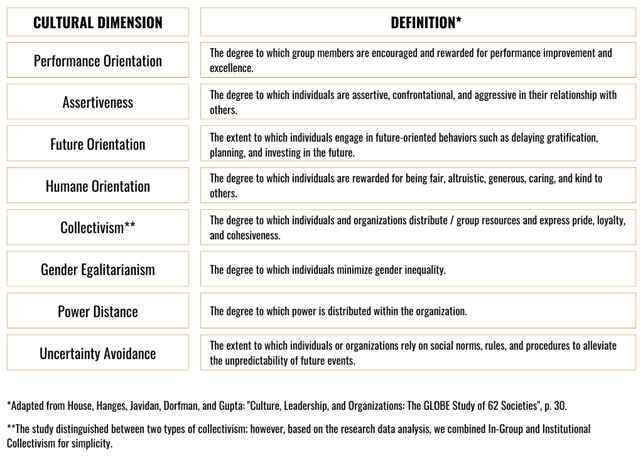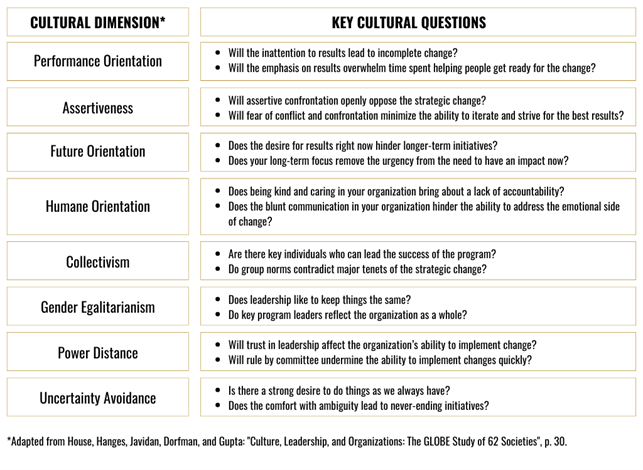
Find out why culture can support or undermine strategic change management success.
The oft-quoted phrase “culture eats strategy for breakfast” is attributed to Peter Drucker (see “Does culture really eat strategy for breakfast?”).
Even if Drucker didn’t say it, the idea that culture drastically affects the success of strategy has been around for a long time.
In 1985, Edgar Schein wrote in his book “Organizational Culture & Leadership” that “culture determines and limits strategy.”
The fundamental idea is that organizational culture stops a good change management strategy implementation.
A culture that’s averse to conflict and accountability will certainly limit the ability to achieve strategic change.
Consider Patrick Lencioni’s “5 Dysfunctions of a Team.”
Can you imagine an organization sustaining a strategic change if its culture exhibits:
- Inattention to results
- Avoidance of accountability
- A lack of commitment
- Fear of conflict
- Or a lack of trust?
Lencioni shared five dysfunctions, but there are more than five areas of cultural dysfunction (see table below).
Organizations & Culture
Even though aspects of any culture are disheartening, organizational culture isn’t inherently good or bad.
For instance, the way power is displayed in a culture is neither good nor bad.
We all know of hierarchical power-based organizations that thrive, as well as flat and collaborative organizations that lead their industries.
As a result, an organization’s culture helps it thrive – or hinders its success.
Whether it helps or hurts depends on the culture AND the strategic change implemented AND the individuals involved.
So, how do you know if you have a cultural impediment to future success?
How do you know if you need to implement cultural changes to successfully make a strategic change?
Let’s start by examining the dimensions of an organization’s culture more deeply.
An organization’s culture can be described as the people’s behaviors and the mindset that drives them.
Some parts of culture are implicit and not easily seen, even by the organization’s members.
So House, Hanges, Javidan, Dorfman, and Gupta defined nine dimensions of culture in an organization in their landmark book, titled “Culture, Leadership, and Organizations: The GLOBE Study of 62 Societies”. (See table below).
I reduced the list to eight, combining In-Group and Institutional Collectivism for simplicity.

Each of these organizational culture dimensions indicate whether the organization has a high or low level of that dimension (i.e., high or low-performance orientation).
A high-performance orientation makes an organization excel (UPS) and it may also lead to more difficult culture-causing problems (Enron).
Likewise, high assertiveness helps an organization as people challenge the status quo, while low assertiveness creates a great environment for new employees that inspires new thinking and ideas.
Therefore, cultures that score high or low on a given cultural dimension can be incredibly successful and enjoyable places to work.
Understanding Your Culture to Ensure Strategic Success
When it comes to change, all these cultural elements can derail strategic initiatives. In those instances, understanding your culture and making plans to proactively influence the culture may be required for success.
Below is a table of the eight cultural dimensions with key questions.
The questions express cultural elements at opposite ends of the cultural dimensions that may positively or negatively impact strategic initiatives.
Ask yourself these key cultural questions to determine if you may need to address your culture directly as a part of your strategic change plans:

One final note: if you do choose to work to influence your culture, remember that culture takes time and comes from the top.
After defining the requisite behaviors with leadership, you can create a culture program that lets executives lead the way.
For more on change, culture, leadership, and implementing strategic initiatives, contact Don Barnhart at Opportune.
Opportune helps its clients achieve operational excellence through business transformations in the energy industry.






